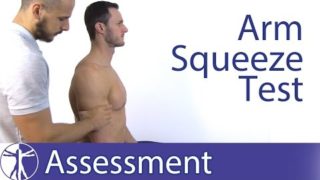Rovsing’s Sign – Physical Exam
ROVSING’S SIGN: Rovsing sign is a sign of appendicitis. If palpation of the left lower quadrant of a person’s abdomen increases the pain felt in the right lower quadrant, the patient is said to have a positive Rovsing’s sign and may have appendicitis. In acute appendicitis, palpation in the left iliac fossa may produce pain […]
Rovsing’s Sign – Physical Exam
Other Videos You Might Like:
Subscribe
Login
0 Comments




